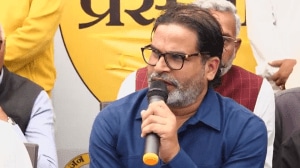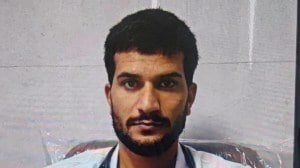On January 24, the Himachal Pradesh Cabinet approved a pilot study by two universities on the controlled cultivation of cannabis for medicinal and industrial purposes.

If the pilot project is successful, Himachal Pradesh will become the fourth state to allow controlled cannabis cultivation. Countries such as the US, Canada and Germany also permit it. We explain its status in India.
Story continues below this ad
What is controlled cannabis cultivation?
It is the regulated cultivation of specific cannabis varieties having minimal intoxicating properties, along with strict monitoring to prevent misuse. Such varieties are commonly known as hemp. The tetrahydrocannabinol (THC) cannabinoid content (a kind of chemical that has an intoxicating effect) in controlled cannabis should be less than or equal to 0.3 per cent.
Under controlled cannabis cultivation, authorities focus on its non-narcotic applications, particularly in the pharmaceutical and industrial sectors. Hemp’s stalks, leaves, and seeds can also be converted into textile, paper, food, cosmetics, biofuel and more. Additionally, cannabidiol (CBD) compounds in the plant are effective in treating chronic pain.
On April 26, 2023, the HP government constituted a committee under Negi to examine the legalisation of cannabis/hemp cultivation (excluding charas) for medicinal, scientific, and industrial purposes.
Notably, cannabis plants are found across all 12 districts of Himachal Pradesh. The regions of Kullu, Chamba, and parts of Sirmaur, Mandi, Solan, and Kangra are considered ideal due to their climate conditions and elevation. Malana village in the Manikaran Valley (Kullu district), in particular, sees illegal narcotic cannabis cultivation. The committee engaged with Panchayati Raj representatives from these districts and found local support for cultivation with proper safeguards.
Story continues below this ad
What does the law say about cannabis cultivation in India?
Cannabis cultivation is largely prohibited in India due to its psychoactive properties. Section 2 of the Narcotic Drugs and Psychotropic Substances (NDPS) Act, 1985, prohibits the production and sale of cannabis resin and flowers. It defines charas as the separated resin, in any form (crude or purified), obtained from the cannabis plant. It also includes concentrated preparations such as hashish oil or liquid hashish.
However, it provides exceptions for cannabis cultivation and use for industrial and medicinal purposes under government regulation. Section 10 of the Act allows state governments to regulate, permit, or prohibit cannabis cultivation for medicinal and scientific purposes.
Additionally, Section 14 grants the Central government the power to authorise and regulate cannabis cultivation for research or other approved purposes. It states, “The government may, by general or special order and subject to specified conditions, allow the cultivation of cannabis plants for industrial purposes, specifically for obtaining fiber or seed, or for horticultural purposes.”
What are the challenges in implementing controlled cannabis cultivation?
Drawing from Uttarakhand’s experience as the first state to allow controlled cannabis cultivation in 2018, the committee noted several challenges. One major issue was maintaining the government-mandated THC limit of 0.3 per cent. Officials from Uttarakhand’s Excise Department, and those in the industry, said obtaining seeds capable of consistently producing plants with THC under this threshold was difficult.
Story continues below this ad
Cross-pollination in the plants further complicated efforts to maintain THC levels. Other challenges included the need for greater awareness and training among officials and stakeholders, the shortage of skilled manpower, the requirement to establish specialised laboratories for high-quality seed development and an effective regulatory mechanism.
What were the committee’s recommendations?
Based on its observations in other states, as well as discussions with state officials from the Narcotics Control Bureau (NCB), Excise and Sales Tax Departments, Health Departments, and research institutions like the CSIR-Indian Institute of Integrative Medicine (IIIM) in J&K, the committee made eight recommendations.
Among these were amending the Himachal Pradesh NDPS Rules, 1985, to permit, control, and regulate cannabis cultivation and allowing cannabis cultivation solely for industrial purposes (fibre and seed production). It also suggested a Standard Operating Procedure (SOP) and creating a state-level authority with a single-window system to regulate cultivation.
The CSK HP Agriculture University in Palampur and Dr. YS Parmar University of Horticulture & Forestry in Nauni have been recommended for developing research and development techniques. The Legislative Assembly accepted the committee’s report in September 2024.
Why have some concerns been raised?
Story continues below this ad
Some experts and political leaders have urged the state government to proceed cautiously with the pilot project. However, no one has opposed the idea itself.
Former NCB officer and ex-adviser to the Himachal Pradesh Nasha Nivaran Board, OP Sharma, raised concerns about private firms potentially misusing the cultivated cannabis. He also questioned whether small farmers would benefit from the initiative, highlighting organised drug rackets involved in the illegal cannabis trade.
Former CM and Leader of Opposition (LoP) Jairam Thakur emphasised the need for stringent safeguards, stating, “At a time when drug abuse is a significant threat to our society, ensuring that controlled cannabis cultivation remains out of the hands of anti-social elements will be a challenge. Before implementing the project, the state government must develop a mechanism to prevent misuse at the ground level.” Environmental activist Guman Singh said the project should primarily be aimed at revenue generation and improving farmers’ livelihoods.
What is the status of controlled cannabis cultivation in other states?
In Uttarakhand, the Centre for the Aromatic, Selaqui, has been the nodal agency for cultivating industrial hemp. In Madhya Pradesh, Sai Phytoceuticals has been granted a license under the newly amended hemp rules for the manufacture of medicine from cannabis. The state has not allowed the cultivation of cannabis so far.
Story continues below this ad
In J&K, the cultivation is being done at a farm in Jammu by CSIR-IIIM as a pilot project in Private Public Partnership (PPP) mode with a Canadian firm. This is India’s first medicinal cannabis project. Organisations like the Indian Institute of Integrative Medicine (IIIM), Jammu, are involved in developing cannabis-based medicines. IIIM has collaborated with the government to study its potential for treating cancer and epilepsy.








































